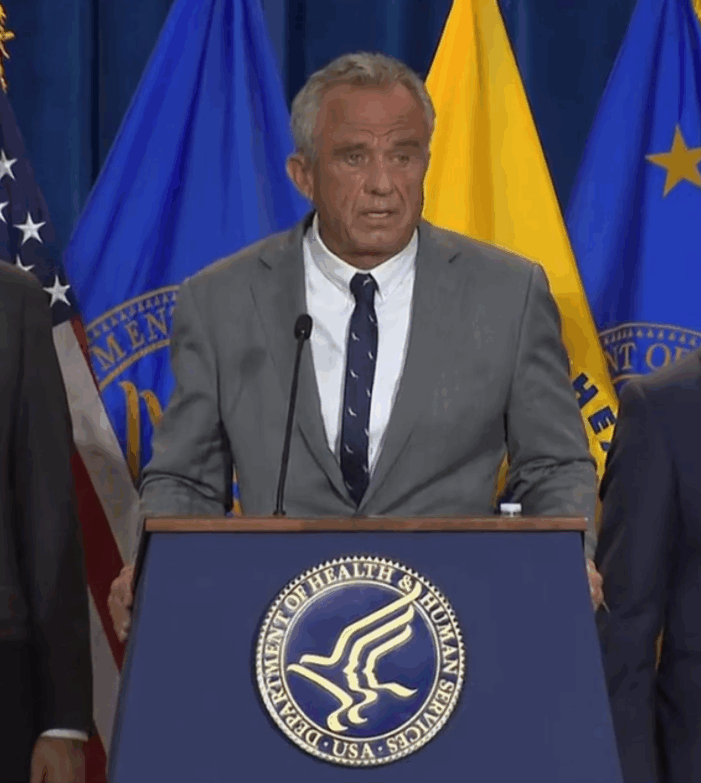HHS Secretary plans to phase out petroleum-based synthetic dyes in the nation’s food supply
In a move that’s drawing praise from health advocates and concerned parents nationwide, Health and Human Services Secretary Robert F. Kennedy Jr. has taken a strong stand against artificial food dyes—chemicals commonly found in many of America’s favorite processed foods, especially those marketed to children.
Standing alongside National Institutes of Health Director Dr. Jay Bhattacharya and FDA Commissioner Dr. Marty Makary at a press conference in Washington, D.C., Kennedy announced a sweeping plan to phase out petroleum-based synthetic dyes by the end of 2026.
“We’re going to do real science—on the issues that matter most to Americans,” Kennedy said during an appearance on Jesse Watters Primetime. “We’re going to make sure our kids are eating real food again. Because right now, they’re not. They’re eating poison disguised as food.”
What’s Changing—and Why It Matters
The initiative includes revoking the FDA’s authorization of synthetic colorings such as Citrus Red No. 2, Orange B, Red No. 40, Yellow No. 5, and others that have long been the subject of health concerns. Just earlier this year, the FDA officially banned Red Dye No. 3, citing studies linking it to cancer in animals.
While these dyes give our cereals, candies, and snacks their bright, appealing colors, research continues to question the safety of these additives—particularly for children, whose developing bodies may be more vulnerable to the potential effects.
“When my uncle was president, just 3% of Americans had chronic disease. Today, it’s 60%,” Kennedy pointed out. “And 74% of our young people are unfit for military service. These are alarming trends, and our food system is a big part of the problem.”
A Closer Look at What’s in Your Pantry
Kennedy used Froot Loops cereal as a prime example of the double standard in food manufacturing. In countries like Canada, the same product is made with vegetable-based dyes. In the U.S., however, it still contains petroleum-derived synthetics—some of which are banned throughout Europe and Asia.
“We shouldn’t be feeding our kids ingredients that other nations won’t even allow on their shelves,” Kennedy said. “It’s time we hold food manufacturers accountable and stop allowing America to be a dumping ground for banned chemicals.”
Natural Alternatives Are on the Horizon
To help the industry transition, the FDA is fast-tracking its review of safer, plant-based alternatives like butterfly pea flower extract and other natural colorants. The goal is not to eliminate visual appeal from food—but to ensure that what we’re putting on our plates doesn’t come at the cost of our children’s health.
Many nutritionist say this has been a long overdue.
“We’ve known about the risks of artificial dyes for years,” one registered dietitian said. “This should have happened decades ago. But better late than never.”
Red, White, and Blue No. 1?
At its core, this issue goes beyond what’s in a snack—it’s about national health and personal freedom. Parents have a right to know what’s in their food, and they deserve the choice to avoid potentially harmful additives. RFK Jr.’s initiative aims to return that power to the people.
The fight for clean food isn’t just a wellness trend—it’s a step toward restoring the health of future generations. It’s about leadership that prioritizes transparency, accountability, and common sense.
“We can’t continue to exist like this,” Kennedy warned. “We need to rebuild trust in our institutions by putting Americans’ health—not corporate profits—first.”
What Comes Next?
If the administration’s plan holds, the U.S. food supply will look very different by the end of 2026. And that’s a good thing. It means cleaner labels, fewer unknown chemicals, and healthier choices for families everywhere.
As the Secretary himself put it: “Food should be food—not a science experiment.”
Stay tuned for more updates as the FDA moves forward with the phase-out and works with food companies to embrace safer, more natural alternatives.
Looking for safer, healthier food options for your family? Start by reading labels, supporting brands that use natural ingredients, and advocating for transparency in our food system. Every child deserves the chance to grow up healthy and strong.
4o

